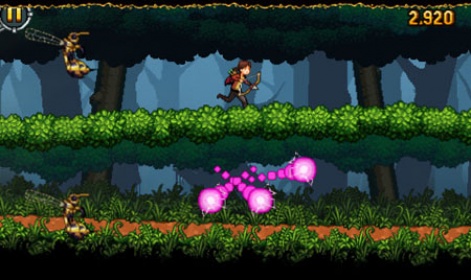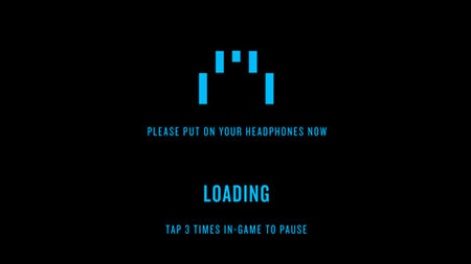Trevor Klein is the Head of Development at Somethin' Else, a BAFTA award-winning content design company.
His work has been recognised with international awards for innovation in broadcast, publishing and games.
For brands, it's all about content marketing also known as brand content (check out this PDF).Alongside traditional on and offline advertising, there's a large and growing amount of investment from brands in original written, drawn, audio, video, interactive and, yes, even games content.
Coca Cola went public at the end of last year with its content marketing strategy, outlining its commitment to spend at least 10 percent of its budget on the most risky, innovative and new ideas.
Nike and Red Bull are particularly well known for their successes in content marketing, too, but they're far from the only examples.
Shady history
Historically, a 'branded game' had some pretty grim connotations.
It was work-for-hire of the most embarrassing type game mechanics glued to product placement and churned out as cheaply as possible (it's Pac-Man with cereal. Or is it Fridge Tetris? No, it's Frogger Road Safety!).
More recently there was the gamification boom, which had brands haemorrhaging money until they realised it was 99 percent snake-oil, 1 percent quite-difficult-actually.
Now, rather than sticking some badges on a thing and calling it a day, brands are commissioning increasing numbers of proper, full, credible games games that aren't plastered with product placement.
Games that thoughtfully embody brand values without compromising their editorial quality. Games like Hunger Games: Girl on Fire.

This presents a real opportunity for mobile game developers and studios to collaborate with brands in a way that's creatively, commercially and critically successful for both parties.
Why mobile specifically? Because 'mobile', like 'content marketing', is hot. And because it works.
The low-down
At the risk of being overly simplistic, here are some sweeping generalisations that are *definitely always true in every circumstance*.
Brands work with advertising agencies to create marketing campaigns with specific objectives: Launch Product X / Increase awareness of Service Y / Make people like us again after Horrifying Industrial Accident Z.
These campaigns take place over a bounded period of time (say, six months), and are usually restricted to specific geographical areas. After this time, the agency and the brand will measure the effectiveness and move on to the next campaign.
Mobile game studios are interested in creating long term value: originating IP, keeping cash flowing through the business, getting the initial push right, as well as the long tail of sales.
Making creative, exciting work is a big part of this, too studios rightly want to be proud of the games they've made. There's a tricky balance to be struck for every studio and developer working without a big cushion of cash between work-for-hire and exciting passion projects.
The holy grail is to find a way of working together studio, agency and brand in a way that meets everyone's goals.
So you want to make a game
Big Traditional Advertising Agency (BTAA) is on retainer for YouthBrand working on a multi-million-dollar campaign that encompasses billboards, TV, online banner ads and a live gig experience.
To round out this campaign they have a low six figure budget and some ideas that they think could work as a mobile game.
Credible Indie Studio have been sending the odd 'this is what we're up to' email every few months, so are invited to pitch alongside BTAA's usual partners who handle everything else content-shaped. Against the odds, our plucky indie studio wins the pitch and starts working on the game.
This is where it can get challenging. YouthBrand may not have made a 'proper' game before (nor, in fact, may have BTAA), so your role as the studio is as much to educate all the stakeholders about the process as it is to make a great game. You'll need to do a lot of work to understand their brand values, and the audience they're trying to reach.
From this you'll ideally work together to find a way to communicate those values through game design to their target audience without making Angry Birdseye or Opal Fruit Ninja (note: check whether Opal Fruits still exists (No, it doesn't).
Of course, more and more agencies and brands do 'get it', so in the best possible scenario all parties will be able to focus on making the best game they can.
To use an example, we've just launched a game with Havas for Scotch whisky brand Chivas.
The aim of Mashtun (a suite of local multiplayer parlour games between connected devices) was first and foremost to help players have more fun at parties.

It implicitly communicates the campaign message of 'The Art of Hosting' playing actually makes you a better host, as guests will have more fun.
It also makes clear that the game is funded by Chivas (e.g. the visual design is influenced by the product design), but the brand itself doesn't get in the way of the gameplay there aren't, for instance, any pop-ups half way through suggesting you nip down to the off-licence to stock up.
So far so work-for-hire and, for us, it's work of which we are genuinely proud.
We've been able to creatively explore the physical multiplayer gaming space, and crucially create and retain IP in the technology and game design to feed into future projects.
Business Time
As well as deriving value from work-for-hire arrangements, there are opportunities to structure riskier, but potentially more lucrative commercial deals with brands. Here is where brands can perhaps step more obviously into some of the roles of a games publisher.
The most important consideration is for the studio to retain as much of the IP as possible.
Fortunately, brands tend to be much less interested in sharing IP than games publishers. Apart from anything that's clearly branded (visuals, copy, etc), it's rare that there will be a major issue in retaining most (if not all) of the IP.
Since most branded games are released for free (to maximise reach), reducing your production costs in exchange for a share of revenues won't be an option. But, because brands are focused on time-bound campaigns, there may be opportunities for further exploitation after the campaign has finished, whether that's to new platforms or new territories.
For instance, The Nightjar was originally funded as work-for-hire by Wrigley's through AMV BBDO as part of a campaign to raise awareness of their 5 Gum ("a unique sensory experience").

It's a video game with no video starring the dangerously sensual voice of Benedict Cumberbatch and it launched for free in the UK in 2011.
We have since structured a deal with AMV allowing us to relaunch it as a paid-for game around the world with a revenue split, including a joint marketing push.
Going into business with ad agencies to make mobile games can make a lot of sense for a studio. The ad agency is the gatekeeper to big brands and talent, and the studios bring credibility.
The agencies have tremendous marketing talent, and the studios have the expertise to make great games, whether they're a one-off product, or a more long-term proposition.
Final thoughts
It's not easy to get in the door with brands and agencies, and in a slight chicken-and-egg situation the best way can often be to get yourself noticed by showcasing pre-existing and innovative work success breeds success.
Think about work-for-hire not only as a means to generate cash, but also to create fulfilling work and valuable technology.
Have an eye to new commercial deals - you may be better placed to spot opportunities to further exploit the value of a great game after a campaign has finished than an agency (and working with that agency may in fact be the best way to realise that value).
Finally, analytics are (as ever) your best friend.
Great games have whole years of time spent inside them. When compared with a 0.1 percent click-through rate on a banner ad, the deep engagement a branded game can engender is undeniably compelling.
For more information on Somethin' Else, take a look at the studio's website. For more from Trevor, follow him on Twitter.























